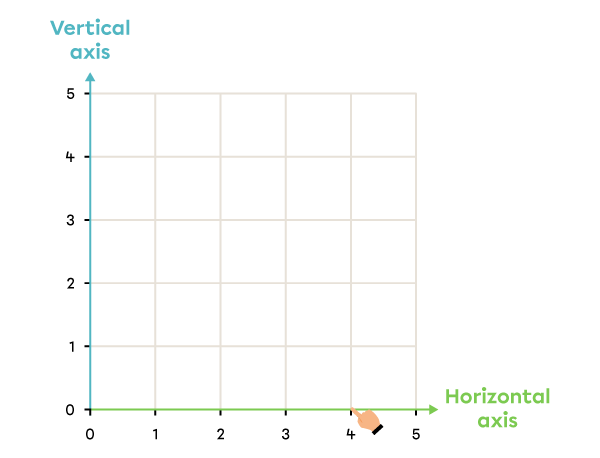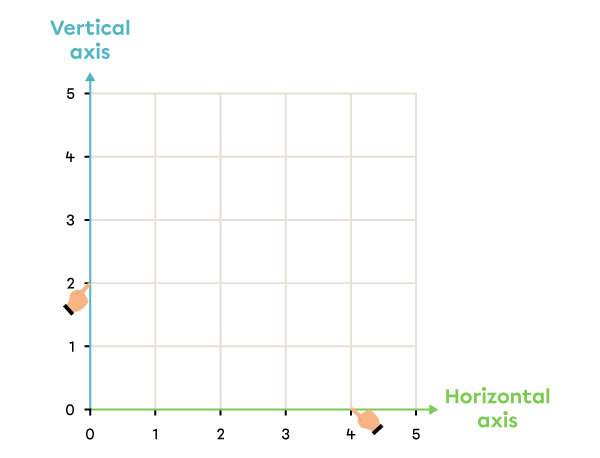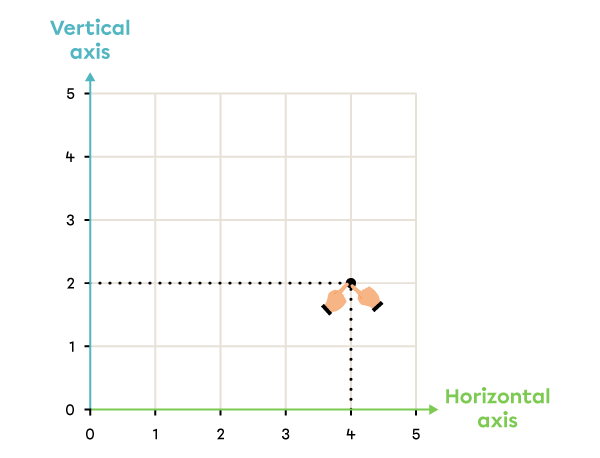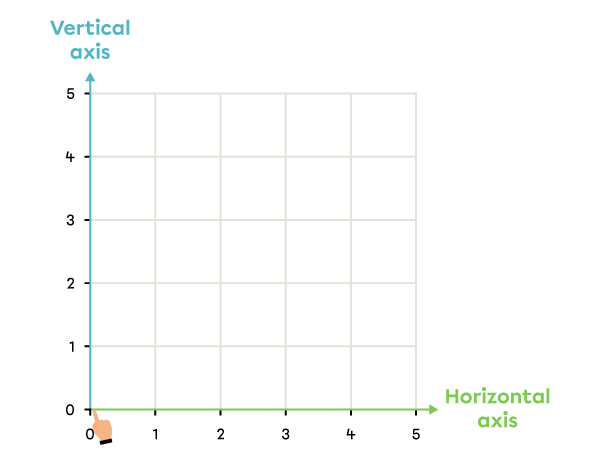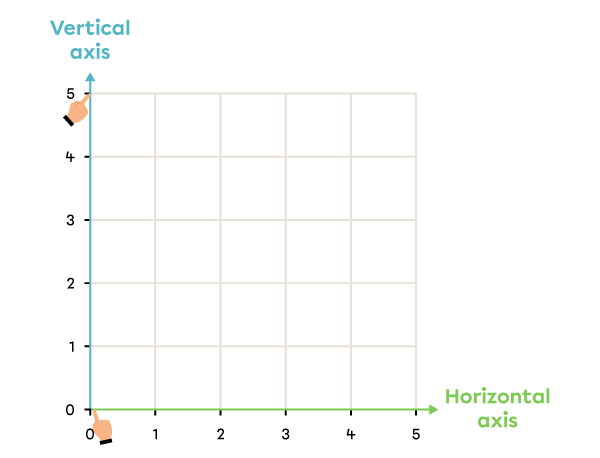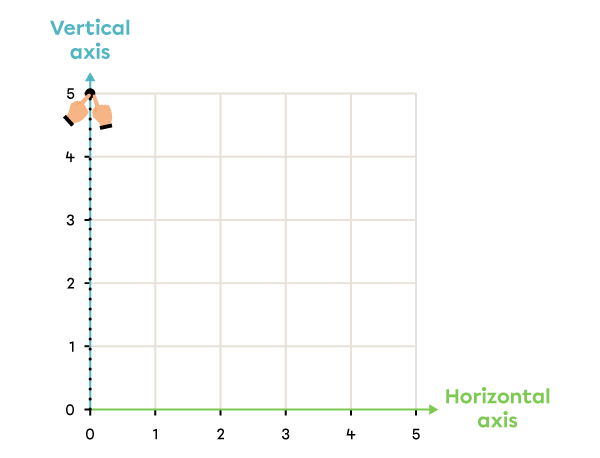The Cartesian plane is a reference system.
Example:
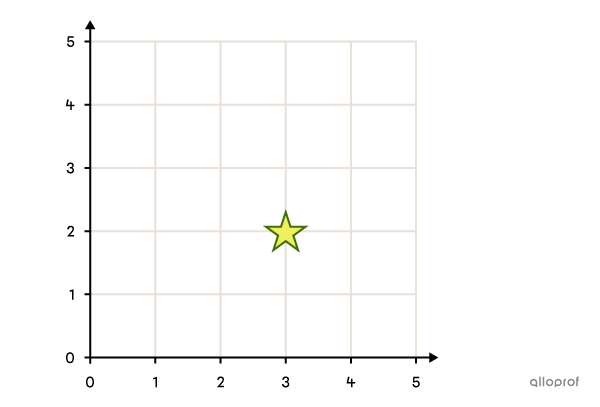
It has a horizontal axis and a vertical axis.
Each axis is graduated by numbers. The horizontal axis is read from 0 towards the right, and the vertical axis is read from 0 upwards.
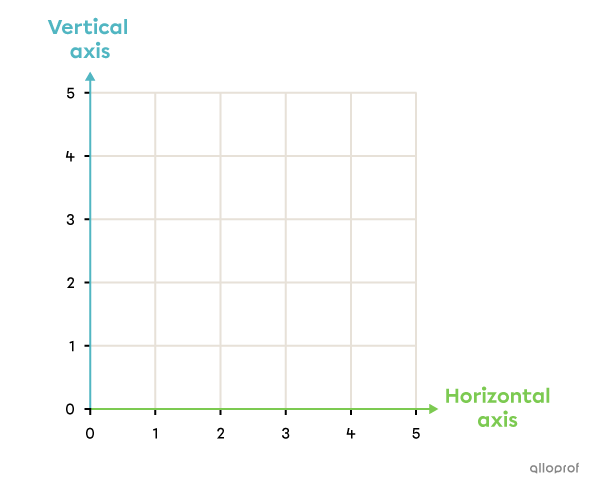
The horizontal axis is also called the x-axis, and the vertical axis is also called the y-axis.
On a Cartesian plane, each point has a horizontal position and vertical position.
The horizontal position of a point is written first, followed by the vertical position. Together, they create an ordered pair (x before y) that represents the exact position of the point.
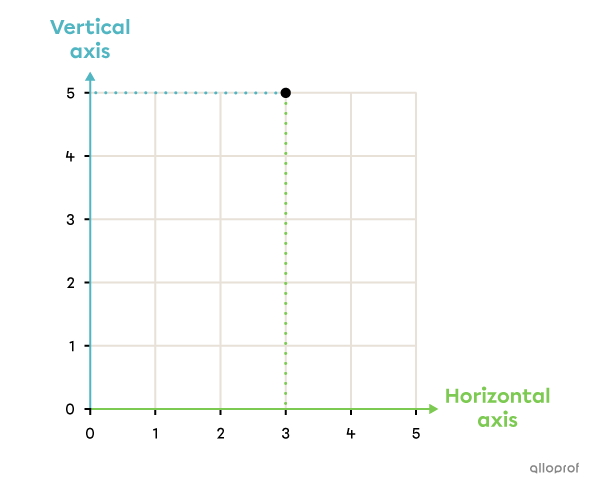
The horizontal position of the point is 3.
The vertical position of the point is 5.
The ordered pair (3, 5) represents the position of the point.
There can also be letters on one axis of the Cartesian plane. An ordered pair can be formed using a letter and a number.
Example: (B, 6)
To place a point on the Cartesian plane using an ordered pair, follow these steps:
-
Look at the first number in the ordered pair.
-
Find this number on the horizontal axis.
-
Look at the second number in the ordered pair.
-
Find this number on the vertical axis.
-
Follow the lines for each number and place the point where they meet.
On the Cartesian plane, place a point at the position (4, 2).
|
(4, 2) |
|
|
|
(4, 2) |
|
|
|
|
On the Cartesian plane, place a point at the position (0, 5).
|
(0, 5) |
|
|
|
(0, 5) |
|
|
|
|
The Cartesian plane is a reference system.
Example:

The Cartesian plane is made up of a horizontal and a vertical axis.
Each axis is graduated using numbers. The horizontal axis is read from 0 towards the right, and the vertical axis is read from 0 upwards.
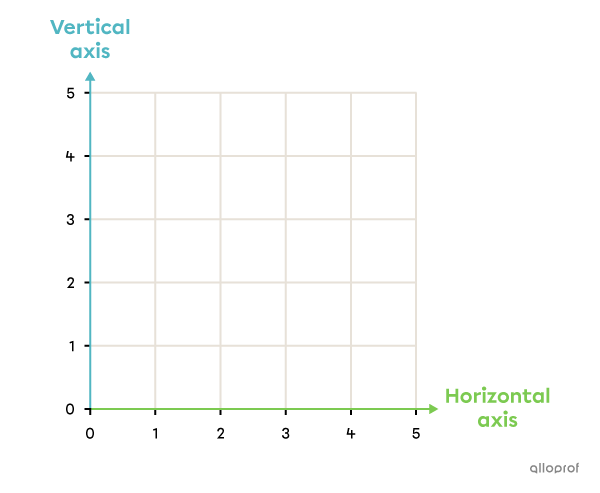
The horizontal axis is also called the x-axis, and the vertical axis, the y-axis.
Coordinates are numbers that specify the horizontal or vertical position of a point on the Cartesian plane.
A horizontal coordinate represents the position of a point on the horizontal axis.
A vertical coordinate represents its position on the vertical axis.
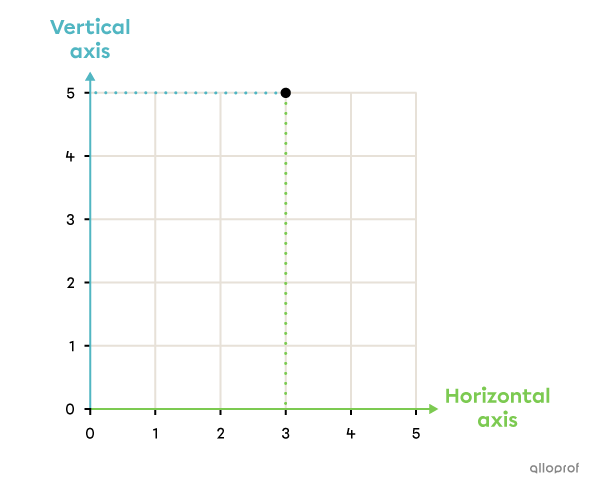
The horizontal coordinate of the point is 3.
The vertical coordinate of the point is 5.
An ordered pair is used to find the exact position of a point on a Cartesian plane. Write the horizontal coordinate followed by the vertical coordinate between brackets. Separate the two coordinates by a comma.

The origin is the point where the horizontal and vertical axes meet. It is represented by the coordinates (0, 0).
Example:

To place a point on the Cartesian plane using its coordinates, follow these steps:
-
Look at the first coordinate in the ordered pair and find the line corresponding to this number on the horizontal axis.
-
Look at the second coordinate in the ordered pair and find the line corresponding to this number on the vertical axis.
-
Place the point where the two lines meet.
Place the point with coordinates (4, 2) on the Cartesian plane.
|
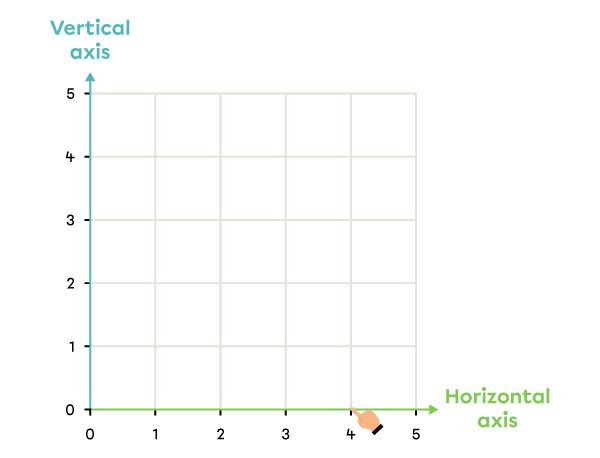 |
|
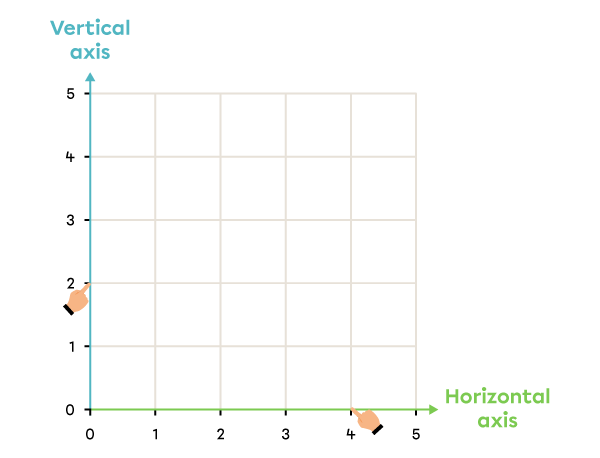 |
|
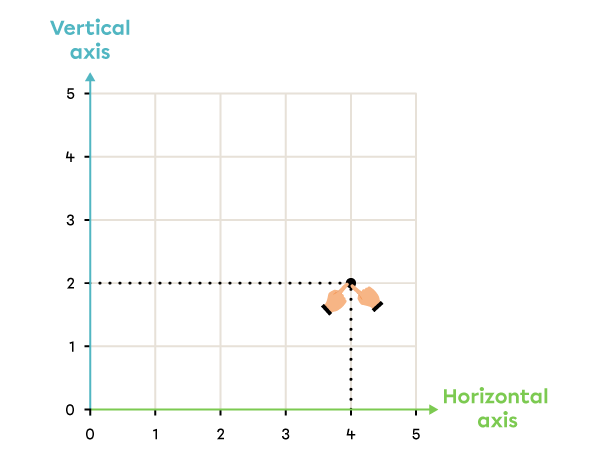 |
Place the point with coordinates (0, 5) on the Cartesian plane.
|
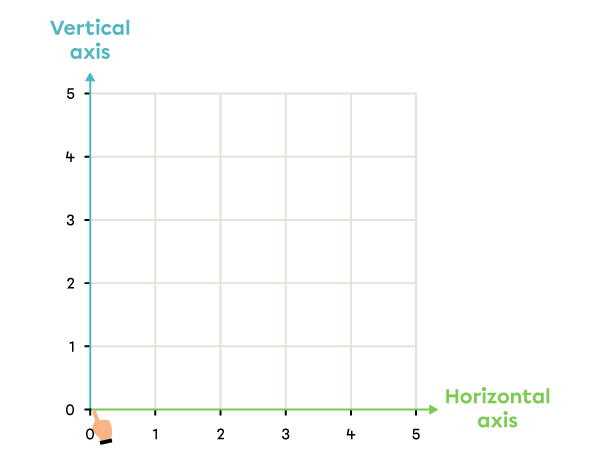 |
|
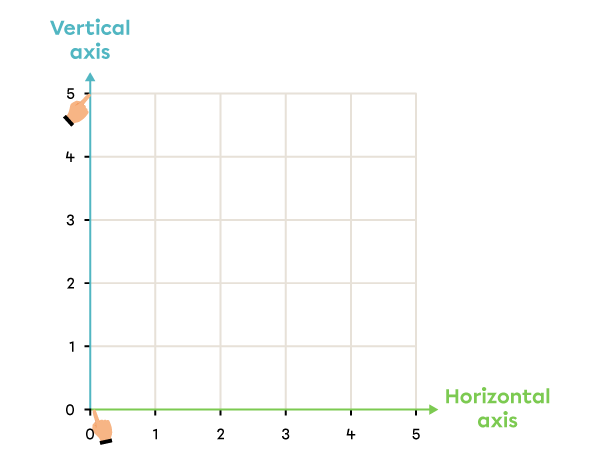 |
|
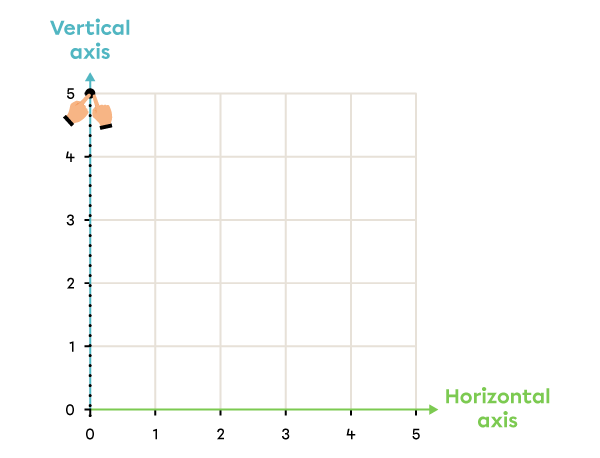 |
To find the position of a point on the Cartesian plane, follow these steps:
-
Find the horizontal coordinate of the point.
-
Find the vertical coordinate of the point.
-
Write the ordered pair with the horizontal coordinate followed by the vertical coordinate in brackets, and separate them by a comma.
Find the position of the point on the following Cartesian plane.
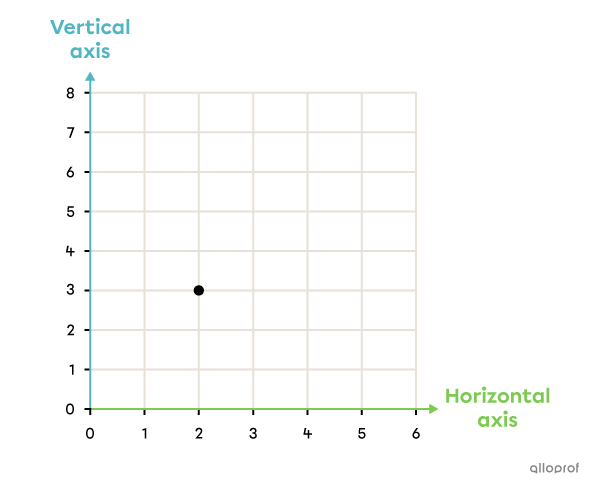
|
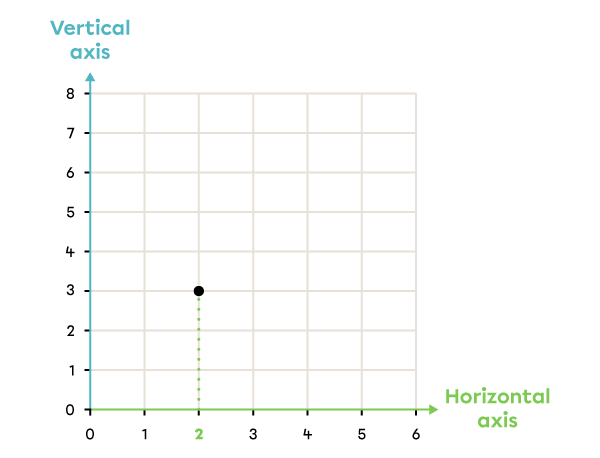 |
|
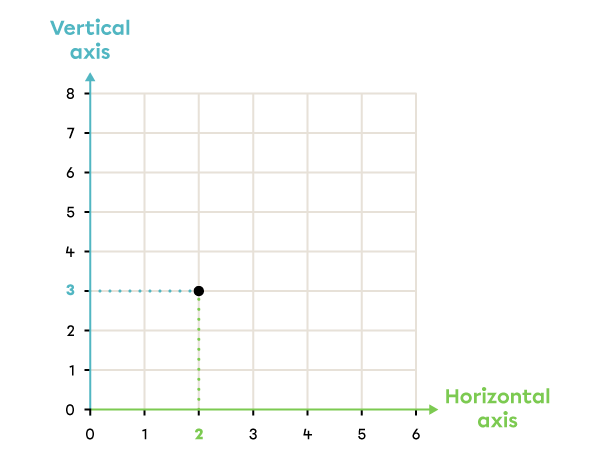 |
|
(2, 3) |
Find the position of the point on the following Cartesian plane.
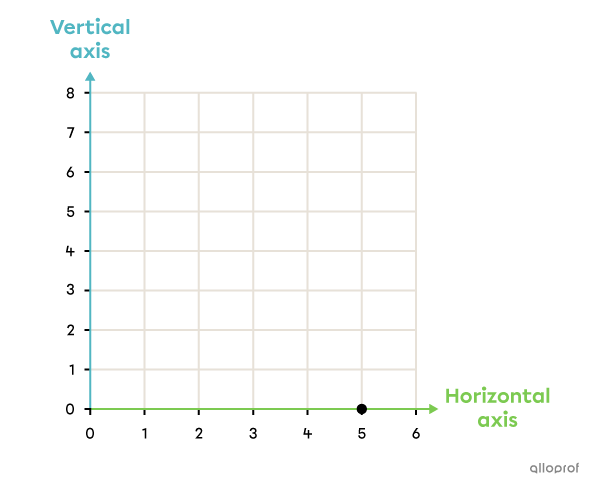
|
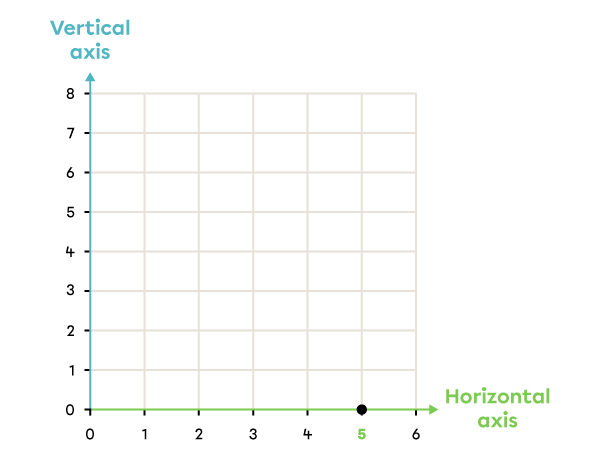 |
|
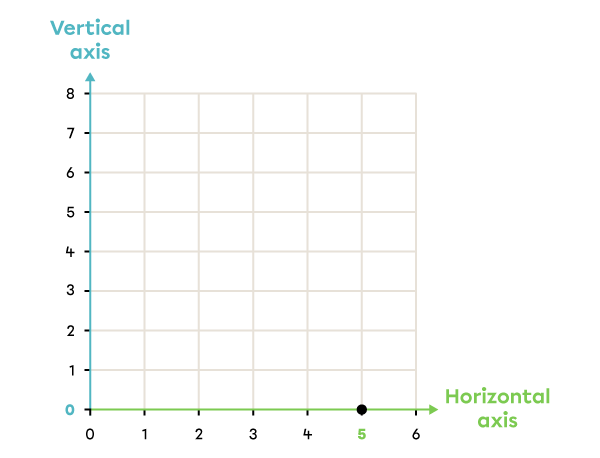 |
|
(5, 0) |
The Cartesian plane is a reference system.
Example:

The Cartesian plane is divided into 4 quadrants separated by the x-axis (horizontal axis) and the y-axis (vertical axis).
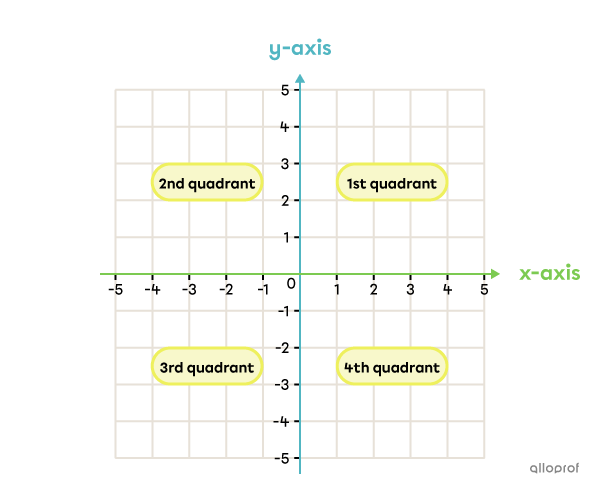
Each axis is graduated with positive integers and negative integers. The centre point of the plane is 0.
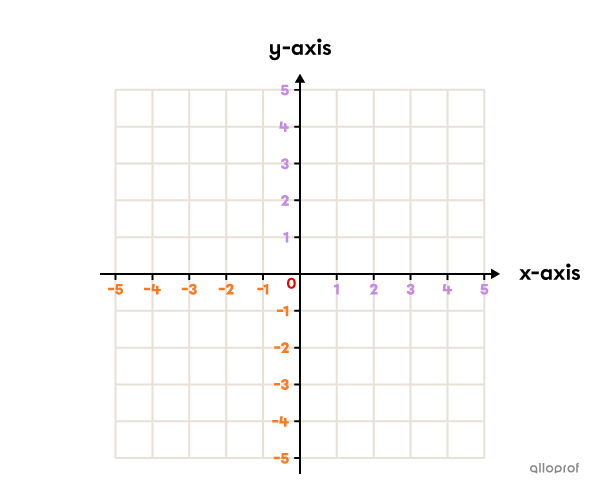
Coordinates are numbers that specify the horizontal or vertical position of a point on the Cartesian plane.
The horizontal coordinate represents the position of a point on the x-axis (horizontal axis).
The vertical coordinate represents its position on the y-axis (vertical axis).
The horizontal coordinate of the point is -3.
The vertical coordinate of the point is 1.
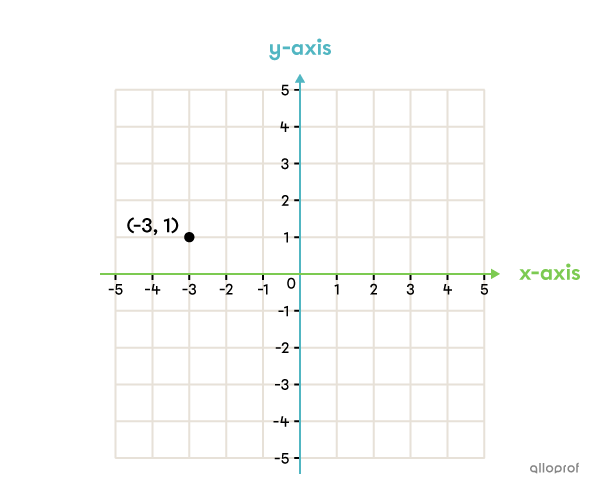
While the one-quadrant Cartesian plane has only positive coordinates, the Cartesian plane with 4 quadrants has both positive and negative coordinates.
Each quadrant has different positive and/or negative coordinates.
-
1st quadrant: positive horizontal coordinate, positive vertical coordinate.
-
2nd quadrant: negative horizontal coordinate, positive vertical coordinate.
-
3rd quadrant: negative horizontal coordinate, negative vertical coordinate.
-
4th quadrant: positive horizontal coordinate, negative vertical coordinate.
Examples:
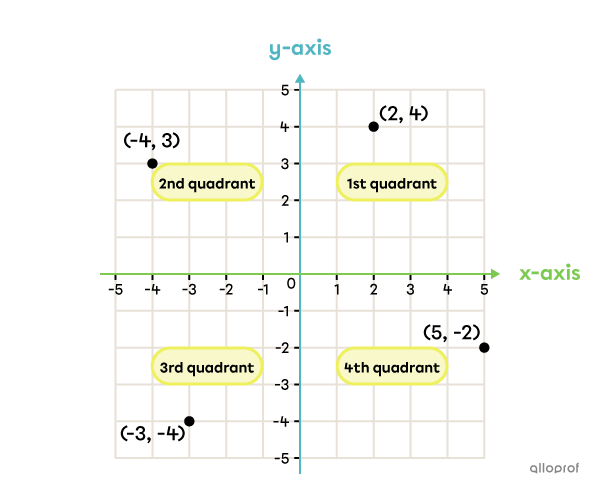
An ordered pair is used to find the exact position of a point on a Cartesian plane. Write the horizontal coordinate followed by the vertical coordinate between brackets. Separate the two coordinates by a comma.

The origin is the meeting point (the intersection) of the x-axis (horizontal axis) and the y-axis (vertical axis). It is represented by the coordinates (0, 0).
Example:

To place a point on the Cartesian plane using its coordinates, follow these steps:
-
Look at the first coordinate in the ordered pair and find the line corresponding to this number on the horizontal axis.
-
Look at the second coordinate in the ordered pair and find the line corresponding to this number on the vertical axis.
-
Place the point where these two lines meet (intersect).
Place the point with coordinates (4, -3) on the Cartesian plane.
|
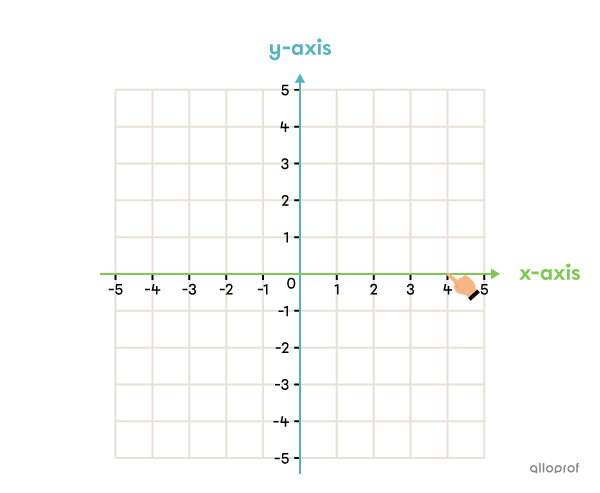 |
|
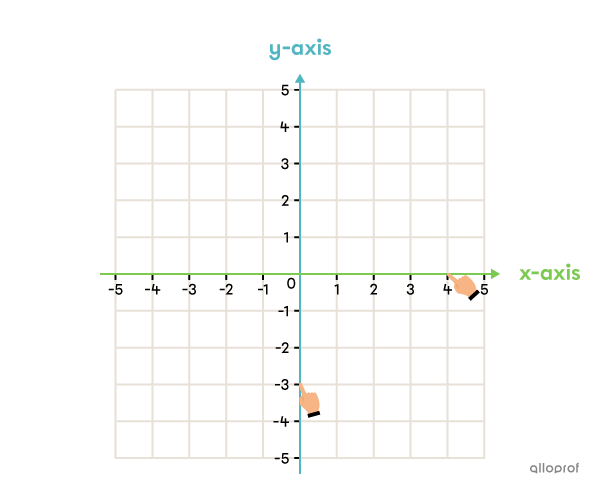 |
|
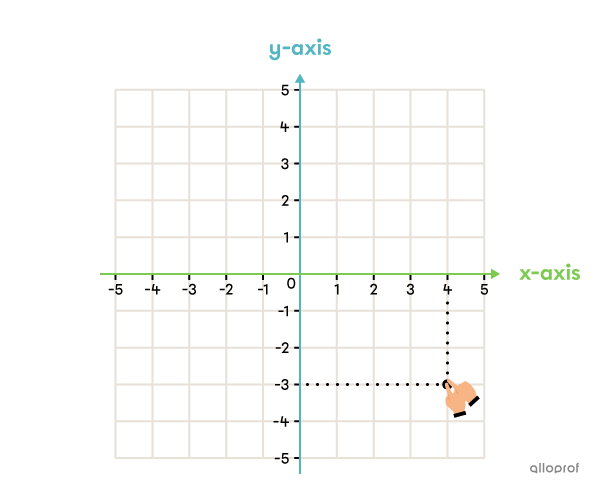 |
Place the point with coordinates (-1, -4) on the Cartesian plane.
|
 |
|
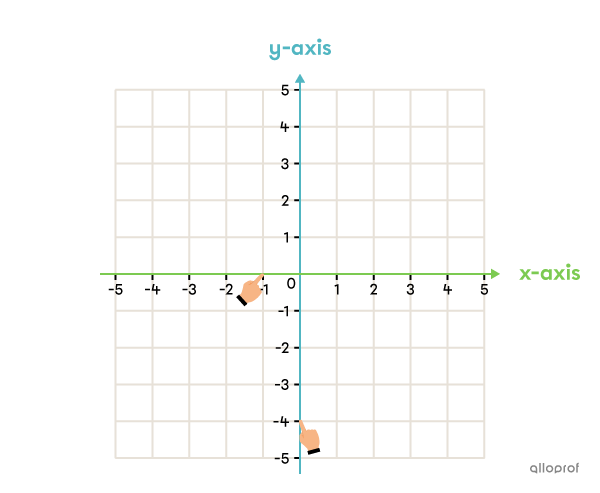 |
|
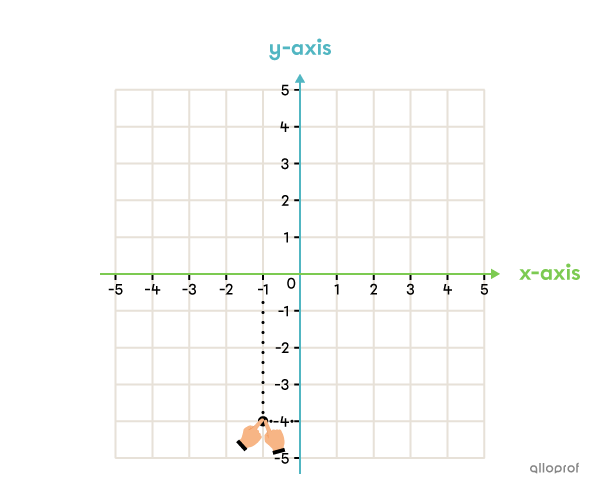 |
To find the position of a point on the Cartesian plane, follow these steps:
-
Find the horizontal coordinate of the point.
-
Find the vertical coordinate of the point.
-
Write the ordered pair with the horizontal coordinate followed by the vertical coordinate in brackets, and separate them by a comma.
Write the position of the point on the following Cartesian plane.
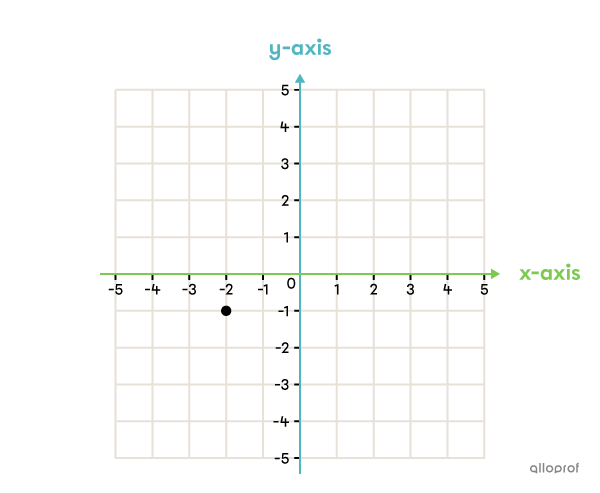
|
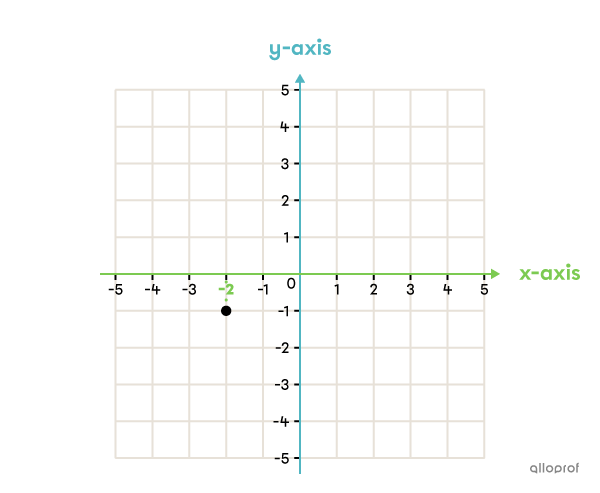 |
|
 |
|
(-2, -1) |
Write the position of the point on the following Cartesian plane.
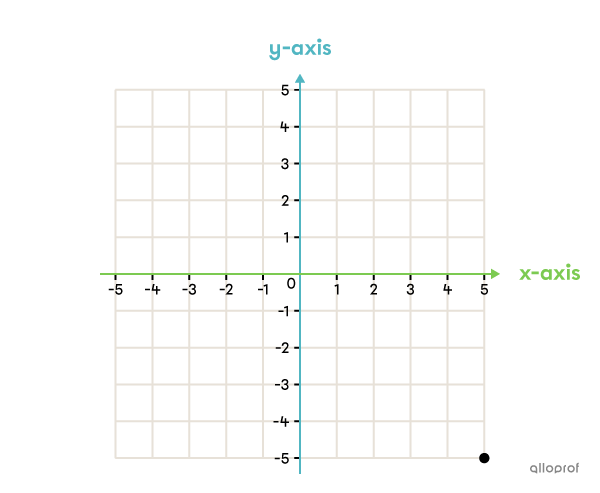
|
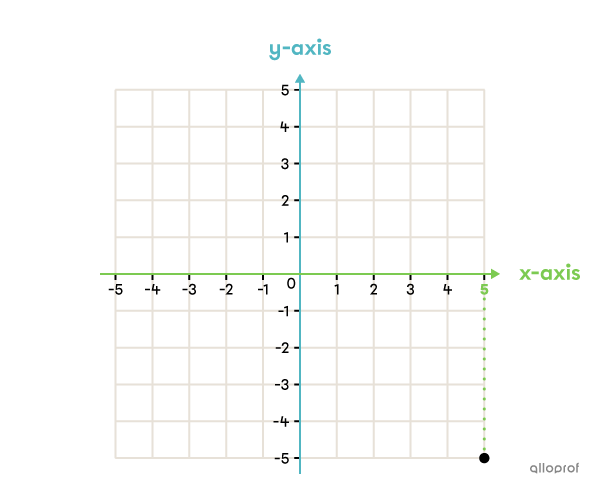 |
|
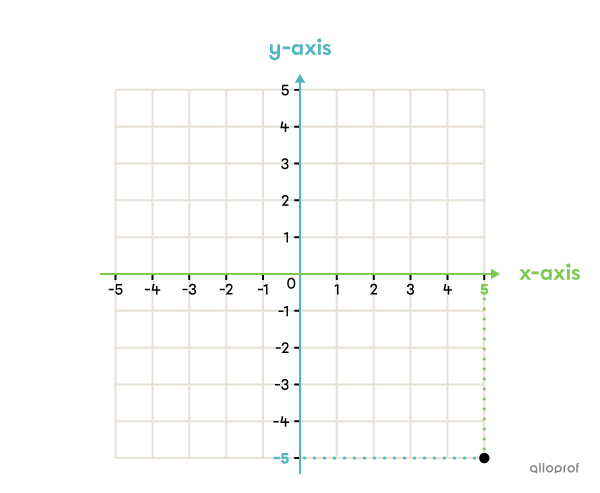 |
|
(5, -5) |
